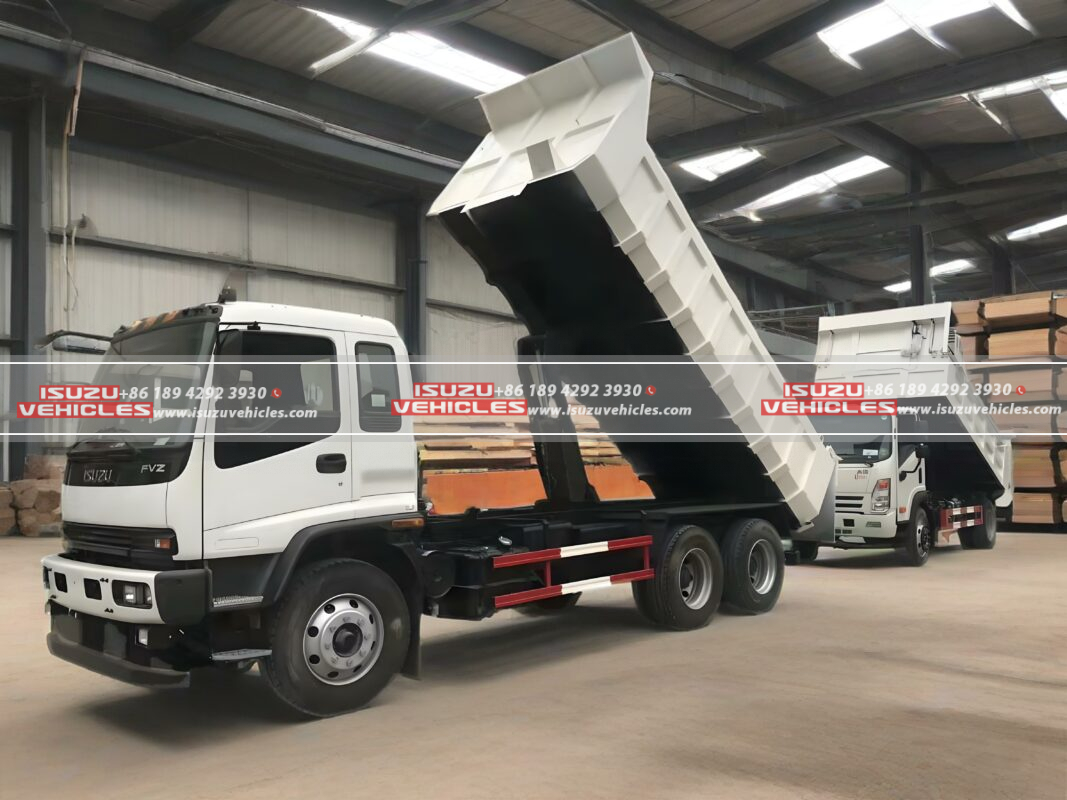Sunrise bleeds through the canopy above Suriname’s Kabalebo River basin as an ISUZU CYZ540J Log Transporter fords waist-deep murk, its reinforced chassis slicing through sediment while hauling 35-ton greenheart logs destined for Antwerp’s luxury shipbuilders—a feat deemed impossible for legacy fleets just months prior. This machine anchors a $42 million strategic alliance between ISUZU China and Staatsolie Bosbeheer, deploying 57 specialized transporters to overhaul a timber industry paralyzed by ecological constraints and infrastructural decay. Engineered to conquer the Amazon’s most brutal terrain while honoring stringent EUDR compliance, these vehicles represent tropicalized titans rewriting sustainable forestry economics.
The Timber Trap – Why Suriname’s Forests Defied Modern Harvesting
Decades-old infrastructure failures turned Suriname’s $1.9 billion timber potential into a logistical nightmare:
Hyper-Terrain Sabotage
- Monsoon Mayhem:
During rainy seasons, the Brokopondo Reservoir’s access roads dissolve into pH-4 acidic sludge, corroding standard truck frames within months. In 2023, 38% of hardwood harvests rotted roadside before reaching Paramaribo’s mills. - Bridge Collapse Epidemic:
Traditional timber jinkers exceeding 50-ton GWR shattered Bailey bridges across the Coppename River corridor, stranding $17 million/month of ethically certified purpleheart.
Compliance Catastrophes
- Deforestation Dilemmas:
EUDR regulations require chain-of-custody GPS verification for every log—a standard impossible with analog fleets, triggering 62% shipment rejections at Rotterdam ports in Q1 2024. - Waste Factor Calamity:
Rough-terrain vibrations splintered premium basralocus during transit, wasting 22% of harvestable volume before processing.
Staatsolie’s technical brief demanded corrosion-immune biomaterials, precision payload stabilization, and blockchain traceability to transform extraction viability.
ISUZU’s Biomechanical Revolution – Core Innovations Decoded
Suriname-spec transporters deploy radical adaptations for ecological and operational survival:
Jungle-Immune Powertrain Architecture
- Torque Vectoring Intelligence:
AI-controlled differential locks redistribute traction among triple-drive axles when traversing laterite swamps, maintaining 15km/h through terrain where competitors sink. Cermet-coated piston rings resist sulfuric mud abrasion, extending engine life by 300%. - Low-Impact Mobility:
Hydro-pneumatic suspension with terrain-sensing valves reduces ground pressure to 18 psi—lighter than a tapir’s footprint—preserving fragile topsoils in UNESCO-protected Central Suriname Reserve corridors.
Digital Forestry Integration
- Blockchain Timber DNA:
Embedded RFID dendrometers auto-record species, coordinates, and harvest timestamps into immutable ledgers. Mill operators now scan logs to instantly generate EUDR compliance certificates, slashing customs clearance from 14 days to 8 hours. - Vibration Annihilation:
Computer-optimized load binders dynamically adjust tension during transit, reducing wood degradation to just 3.2%—critical for preserving the acoustic properties of angelim pedra destined for concert pianos.
The Circular Timber Economy – Synergizing Extraction and Infrastructure
ISUZU’s ecosystem extends beyond log transport to enable industrial symbiosis:
Mill-to-Port Acceleration: ISUZU Cargo Truck Integration
- Finished Product Guardianship:
ISUZU FVR Cargo Trucks with humidity-controlled trailers transport kiln-dried wana planks to Paramaribo’s export terminals, maintaining 12% moisture content through 90% RH jungle humidity. Automated air recirculation prevents fungal blooms during 14-hour customs delays. - Modular Efficiency:
Cargo fleets utilize interchangeable flatbed/container configurations to backhaul Dutch milling equipment from ports, eliminating 76% of empty return trips.
Infrastructure Reinforcement: ISUZU Dump Truck Deployment
- Access Corridor Engineering:
ISUZU Dump Trucks with laterite-stabilization kits distribute volcanic gravel across logging roads, increasing load-bearing capacity by 300% during monsoons. Their swamp-grade flotation tires prevent sinking during emergency access operations near Tapanahony settlements. - Waste Valorization:
Dump trucks transport sawdust byproducts to biomass power plants in Nieuw Nickerie, converting waste into energy for remote sawmills—closing the resource loop across 400km of rainforest.
As dusk settles over the Palumeu River, an ISUZU transporter emerges from primary forest, its telematics pulsing verification of legally harvested kopi logs to Brussels auditors in real-time. Nearby, cargo trucks queue at Paramaribo’s automated sorting docks while dump trucks reinforce the Zanderij Corridor’s crucially degraded sections. For Staatsolie’s Chief Forester Ingrid Vreedzaam, who witnessed decades of harvests lost to decay and non-compliance, this fleet represents more than machinery—it’s Suriname’s passport to premium global timber markets. Where impassable terrain and regulatory barriers once strangled the industry, ISUZU’s engineered sovereignty now delivers biodiversity-aligned prosperity. The deep-tread patterns scarring mud trails aren’t mere tracks—they are sustainable development blueprints etched into the Amazon’s flesh.
